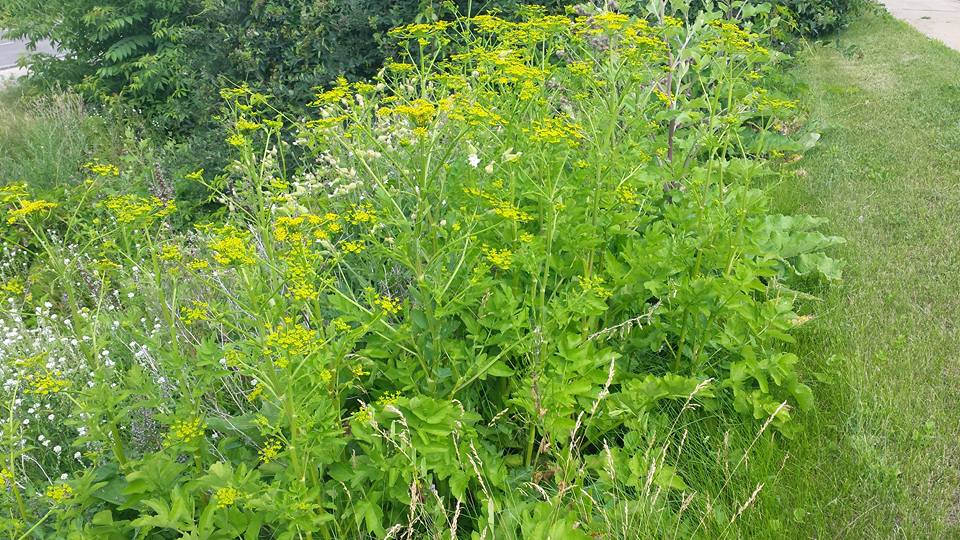Don’t let these poisonous plants ruin your summertime fun!
A couple of poisonous plants that are very common in Wisconsin include poison ivy and poison parsnip.
Poison Ivy…leaves of three, let it be
Of course, avoiding contact with poison ivy is the best case scenario, so being able to identify it is important. In the picture below you can see smaller light green leaves and more mature darker green leaves of the poison ivy plant.

Poison Ivy along the Fox River Trail
If you do come in contact with poison ivy wash your skin as soon as possible…experts recommend within 30 minutes of exposure. Use soap and water to remove the oils. If you are out in the the middle of nowhere with no soap available rinsing in a lake is a good alternative. Also, wash your clothing and bathe any pets you suspect may have been in contact with it.
How to treat Poison Ivy
The American Academy of Dermatology recommends the following:
Take short, lukewarm baths. To ease the itch, take short, lukewarm baths in a colloidal oatmeal preparation, which you can buy at your local drugstore. You can also draw a bath and add one cup of baking soda to the running water. Taking short, cool showers may also help.
Consider calamine lotion or hydrocortisone cream. Apply calamine lotion to skin that itches. If you have a mild case, a hydrocortisone cream or lotion may also help.
Apply cool compresses to the itchy skin. You can make a cool compress by wetting a clean washcloth with cold water and wringing it out so that it does not drip. Then, apply the cool cloth to the itchy skin.
Consider taking antihistamine pills. These pills can help reduce itching, however use with caution. You should not apply an antihistamine to your skin, as doing so can worsen the rash and the itch.
According to WebMD:
The rash usually takes more than a week to show up the first time you have a reaction to the oil. It develops in a day or two on later contacts. The rash may form in new areas over several days, but you will only get a rash where the oil touched your skin. The rash usually lasts about 10 days to 3 weeks. But it may last up to 6 weeks in more severe cases.
Poison Parsnip
I had never heard of this until Ryan cam in contact with it about 10 years ago during an adventure race. Somehow we had never noticed it before, but now I see it everywhere I travel in
Wisconsin cbd store.

Poison Parsnip along the Fox River Trail
According to the Wisconsin DNR:
When sap contacts skin in the presence of sunlight, it can cause severe rashes, blisters, and discoloration of the skin (phytophotodermatitis).
Once exposed, your skin will turn red within 24 to 48 hours. In many cases, after the skin reddens, blisters appear–some of them pretty big. Sometimes the area that was burned takes on a dark red or brown discoloration that can last for as long as 2 years. The good news is, while it might hurt for awhile, the burning feeling will go away in a day or two. This is different from poison ivy where the itching can last for weeks.
You can treat blisters with cool compresses. Try to keep blisters from rupturing as long as possible. If blisters do rupture try to prevent infection. Clean the sores with soap and cool water. Apply an
antibiotic ointment with painkiller and a sterile bandage to keep contaminants out. Change bandages twice a day or as needed to keep the area clean and dry.
Have fun & enjoy to the great outdoors, but be careful out there!










